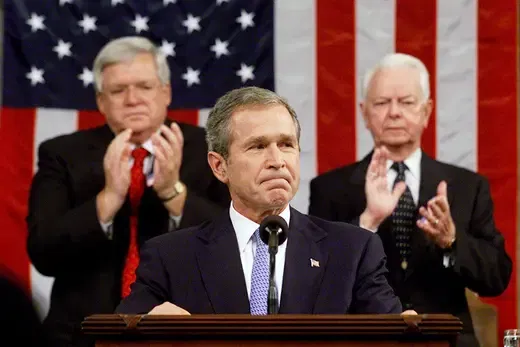
Divya Delhi: Revolutionary geopolitical events, cartographic transformations, economic and technical advancements, and sovereignty and territorial integrity shifts will define the 21st century. These transformations began with the US-led global war on terror, which overthrew the Taliban regime in Afghanistan and ended its sovereignty. The Bush administration ousted the Taliban and installed a US-dominated interim government. After 21 years of violent counter-insurgency, espionage, and covert operations, the US failed and made a deal with the Taliban. After US soldiers left, the Afghan government collapsed and the Taliban returned with a vengeance within hours. In retrospect, the Afghan war started US decline. Today's most popular geopolitical rhetoric, multi-polarization of the world order, is based on the US decline, as the Munich Security Conference puts it. The Taliban were overthrown by the US invasion, and Hamid Karzai formed an interim government. This regime had powerful Tajik, Pashtun, and Hazara chieftains and warlords. Tajik ministers Fahim Khan, Engineer Arif, Abdullah Abdullah, and Amrullah Saleh came from Ahmad Shah Massoud's Northern Alliance.After 2002, the Taliban revived despite US military and financial help. After 2005, they raided ISAF, UN, and US military stations and convoys, revealing their revival. After 2005, the Taliban began suicide bombing military positions and convoys like Iraqi militants. For fear of American pressure, they first controlled only rural Helmand and Kandahar. They attacked metropolitan areas starting in 2010. The Taliban received diplomatic recognition after the Americans negotiated with them. They agreed to most of the Taliban's ridiculous demands, including releasing 5,000 hardened militants and barring the Afghan government from discussions. After the Americans withdrew quickly, the Taliban overthrew the Afghan government within hours. After 21 years of terrible war and billions of dollars in fighting, intelligence, development, and Afghan rehabilitation, why did the Americans lose and humiliate themselves? Above all, the US government's conflict understanding was weak and inconsistent. They invaded Afghanistan claiming the Taliban had protected bin Laden and Al-Qaeda. They initially overthrew the Taliban and hunted Al-Qaeda fighters. Their focus eventually narrowed to Al-Qaeda. All counter-terrorism efforts assumed that Al-Qaeda was the main enemy and that intelligence and security operations should focus on it. Despite no official admission that the Taliban were not a threat, measures on the ground avoided tackling their growing influence and penetration in the South. The frustration of lengthy warfare and rising ISAF losses from Taliban strikes and suicide bombs led to this faulty approach. Given that both the Taliban and Al-Qaeda were Sunni extremists and backed each other—Al-Qaeda even had training centers in Afghanistan—distinguishing between them was illogical. Thus, American forces and intelligence services pursued Al-Qaeda remnants in Waziristan, many of whom mingled seamlessly with Pashtun radicals. After the US invasion of Afghanistan, the Haqqani network and Taliban hid Al-Qaeda terrorists in Pakistan. Al-Qaeda, the Taliban, the Haqqanis, Lashkar-e-Taiba, and Jaish-e-Mohammed often shared members. By 2006-07, Al-Qaeda had become a threatening ideology, while the Taliban gained people, financing, and military equipment. Second, despite knowing the truth, the Americans avoided discussing Pakistan's ISI. Pakistan began the Kunduz airlift of thousands of jihadis in 2001. Interestingly, the entire attack on the Indian Parliament was staged to distract a large number of its forces to the Indian border and allow Al-Qaeda and Taliban mujahideen to enter Pakistan. Pakistan secretly sponsored and reinforced the Taliban from 2002 while denying it. Directorate S handled all Taliban relations for ISI. Pakistan did not directly arm the Taliban to circumvent global counterterrorism watchdogs. Intermediaries—former military officials, commercial contractors, and ex-ISI commanders and officers—protected the Taliban from Directorate S. Taliban leaders in Quetta received safe havens from Pakistan. All US government internal assessments and strategic review papers pointed to Pakistani Taliban strongholds. US terrorism analyst David Kilcullen noted the Taliban's growing professionalism in his appraisal. The Taliban have improved their infantry, communications, command and control techniques, and they have more precise marksmanship and devastating explosives than before. All this would not have happened without Pakistan's strong assistance. The Bush administration dismissed evidence-based reports and studies suggesting action against Pakistan for Taliban sanctuaries. Hamid Karzai almost cut ties with the US for its tacit approval—or intentional ignorance—of Pakistan's Taliban backing. His spymaster, Amrullah Saleh, generated many reports and leads indicating Islamabad's terrorism involvement. He provided phone numbers and other details about Taliban cadres in Pakistan, but the ISI made them inactive within hours. Instead of addressing the issue, the White House engaged with Pakistan and gave its military and intelligence organizations $10 billion.The US-backed Afghan government failed to develop and accommodate Taliban commanders who tried to negotiate with American officials following the invasion. The US government was too arrogant to engage defectors. The Afghan government also failed in governance, development, and justice. While predatory warlords with unclear loyalties dominated huge hinterlands, corruption abounded. Their brutality and narcotics profits tarnished the Afghan government. Public animosity increased when US special forces and CIA terrorist operations killed civilians. The Taliban exploited unhappy tribes' grievances. Finally, the US failed to eliminate narcotics money, which fueled the Taliban's comeback. Afghanistan grew much of poppy in 2006. Afghan farmers planted 400,000 acres of poppy, producing 90% of heroin worldwide. Estimated opium and derivative export value was $4 billion. The Taliban taxed poppy growing with ushr and zakat. This tax on farmgate produce alone would generate at least $100 million, conservatively. More generous estimates say this price may have reached $500 million if imposed on all produce—a huge sum for the Taliban. As poppy farming increased, the ISI sold heroin to Mexican criminal cartels. Later, with Afghanistan's easy access to ephedra, the ISI made huge profits from inexpensive crystal meth manufacture and supplied the cartels. American experts like Mary Beth Long advised aerial spraying poppy fields. Bush wanted the idea, but it never happened. Karzai criticized the plan. The Karzai administration's involvement is a million-dollar question that needs additional study.
- Education(148)
- India(771)
- Entertainment(399)
- Sports(272)
- Business(226)
- Bollywood Hollywood(95)
- International(196)
- Life & Style(91)
- Opinion(139)
- Educational(5)
- Crime(7)
- Technical(6)
- World(18)


